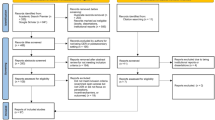Abstract
Revision of earlier cost calculations for the Open University and Conventional Universities in the U.K. for 1973 confirms the findings of a significant cost advantage to the Open University. An analysis of developments at the Open University since 1973 indicates, however, that there has been little reduction in average cost in real terms and no improvement is likely on known developments to 1979. This is surprising for it might be expected that as student numbers rise average costs would fall. A more detailed analysis of the structure of Open University costs indicates why this has not happened. A major determinant of costs is the number of courses and these have continued to grow rapidly since 1973. The rate of increase of new courses has been faster than the rate of increase of new students. In effect the University has been using the economies provided by increased student numbers to increase student choice through the provision of more courses rather than reduce average cost.
Average cost could be reduced whilst keeping the same number of courses by changing the components of the teaching system such as broadcasting. If such fundamental changes were not acceptable then an alternative would be to change the mix of courses between the relatively expensive science and technology areas and the cheaper arts and social science areas. A further alternative is to keep the same mix but ensure a longer life for science and technology courses.
Similar content being viewed by others
References
Attiyeh, R. and Lumsden, K. G. (1971). “University Students Initial Understanding of Economics: The Contribution of the ‘A’ Level Economics Course and of Other Factors”. Economica (February).
Attiyeh, R. and Lumsden, K. G. (1972). “The Production of Economics Understanding: An Analysis of the First Year Course”. Economica.
Carter, C. F. (1973). “The Economics of the Open University: A Comment”. Higher Education 2: 69–70.
Laidlaw, B. and Layard, P. R. G. (1974). “Traditional versus Open University Teaching Methods: A Cost Comparison”, Higher Education 3: 439–467.
Committee on Higher Education under the Chairmanship of Lord Robbins (1963). Cmnd 2267 (Robbins Report) Appendix.
Rumble, G. W. S. V. (1976). “The Economics of the Open University of the United Kingdom”. Open University (mimeo).
Smith, R. C. (1975). “A Proposed Formula for Open University Expenditure in a Plateau Situation”. Open University (mimeo).
U.G.C. (1969). Statistics of Education, vol. 6, London: H.M.S.O.
U.G.C. (1973). Quinquennial Letter of Guidance to Universities, London: U.G.C.
Wagner, L. (1972). “The Economics of the Open University”., Higher Education 1: 159–183.
Wagner, L. (1973). “The Open University and the Costs of Expanding Higher Education”. Universities Quarterly, Autumn.
Author information
Authors and Affiliations
Rights and permissions
About this article
Cite this article
Wagner, L. The economics of the open university revisited. High Educ 6, 359–381 (1977). https://doi.org/10.1007/BF00141373
Issue Date:
DOI: https://doi.org/10.1007/BF00141373




